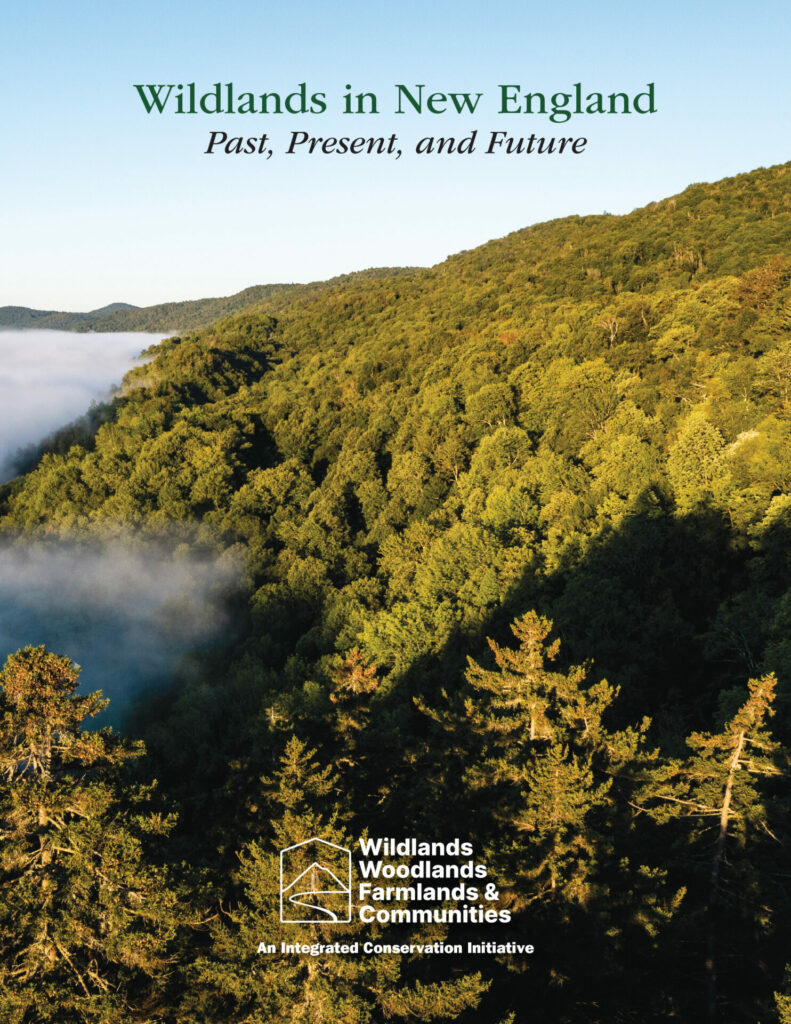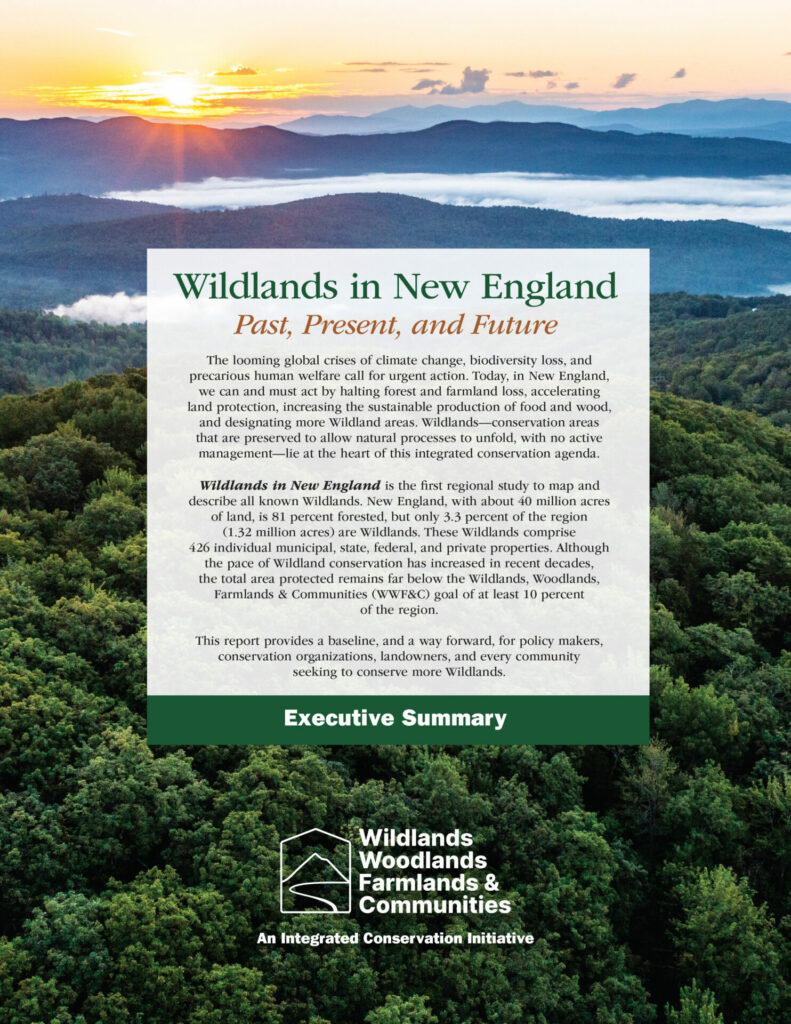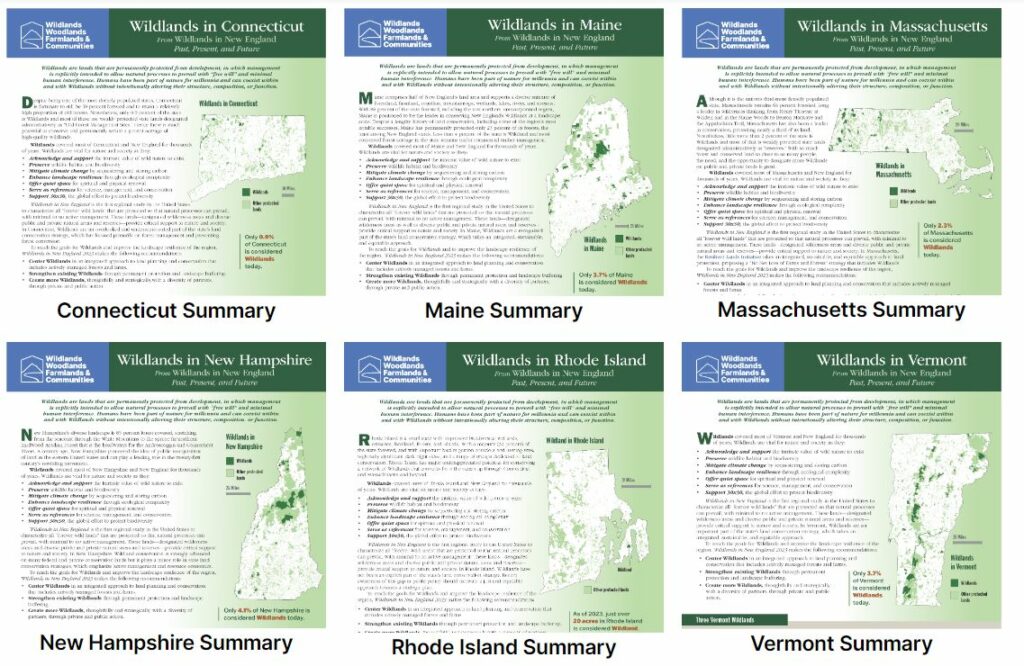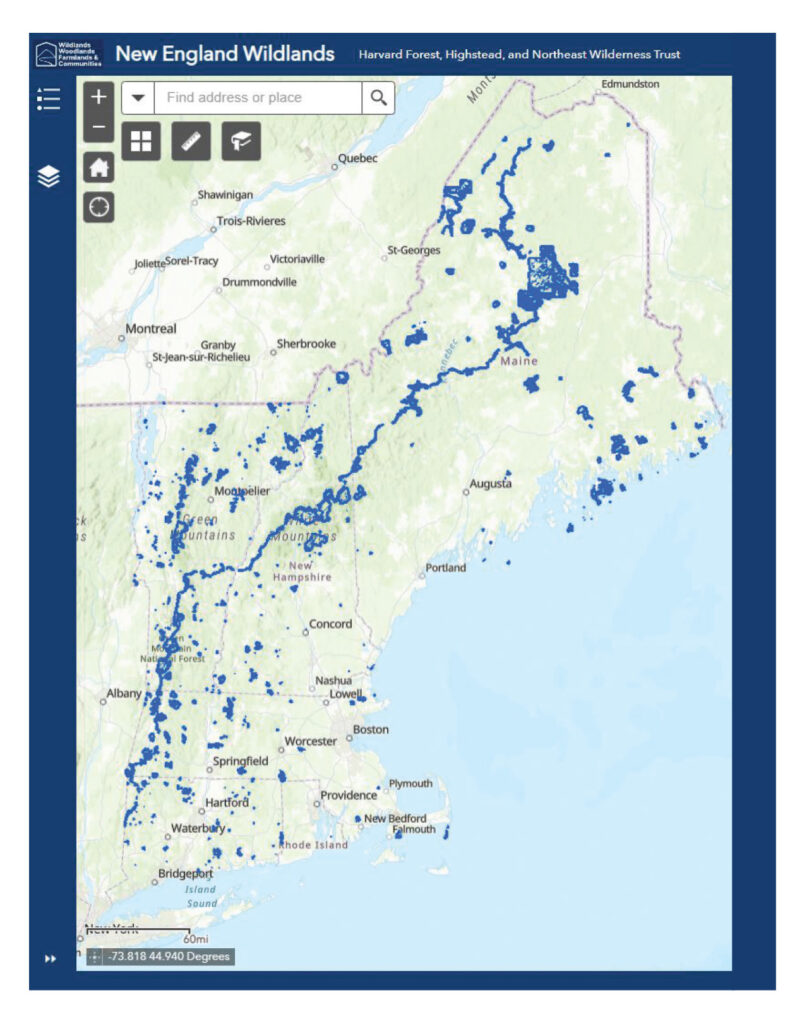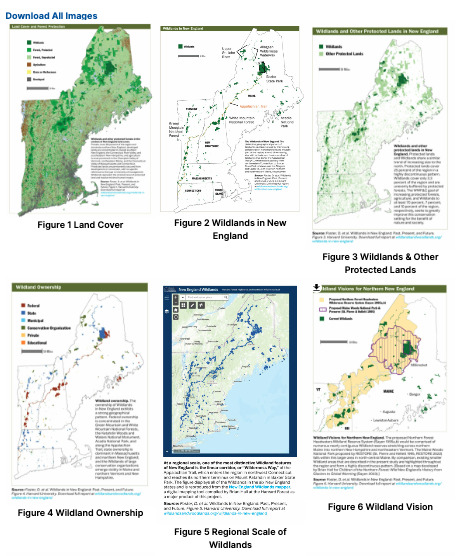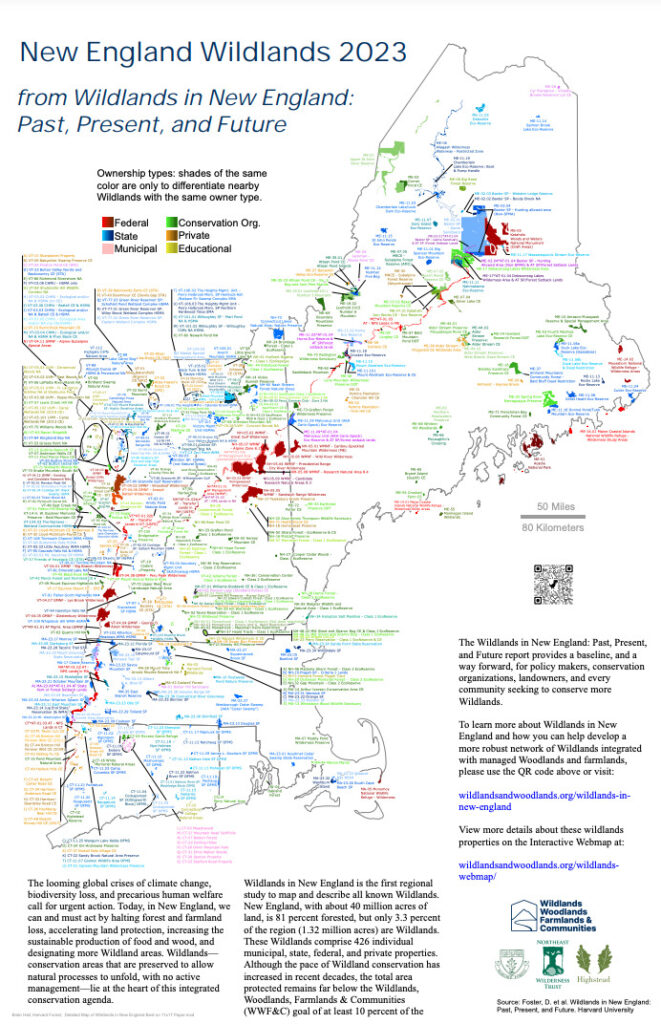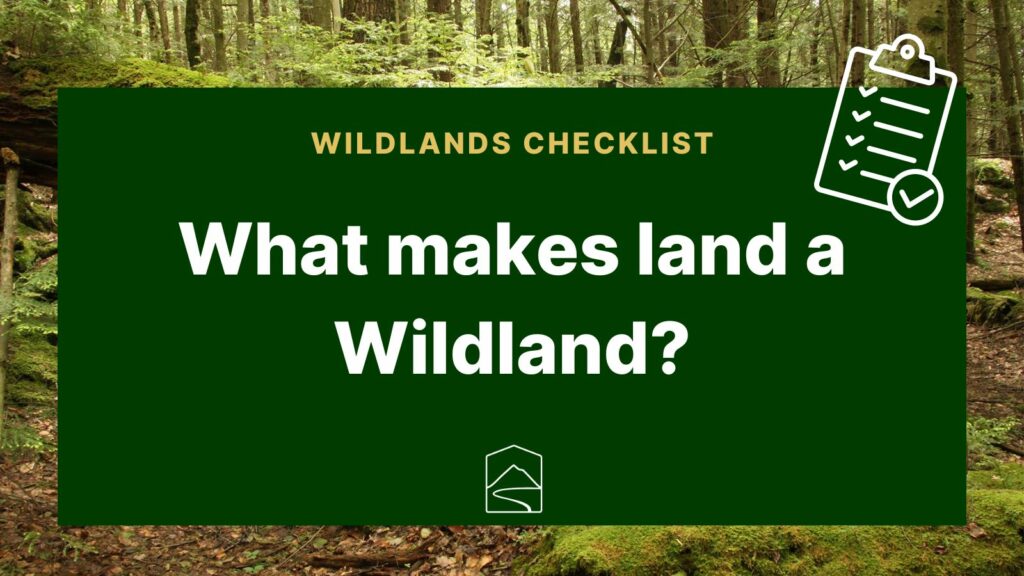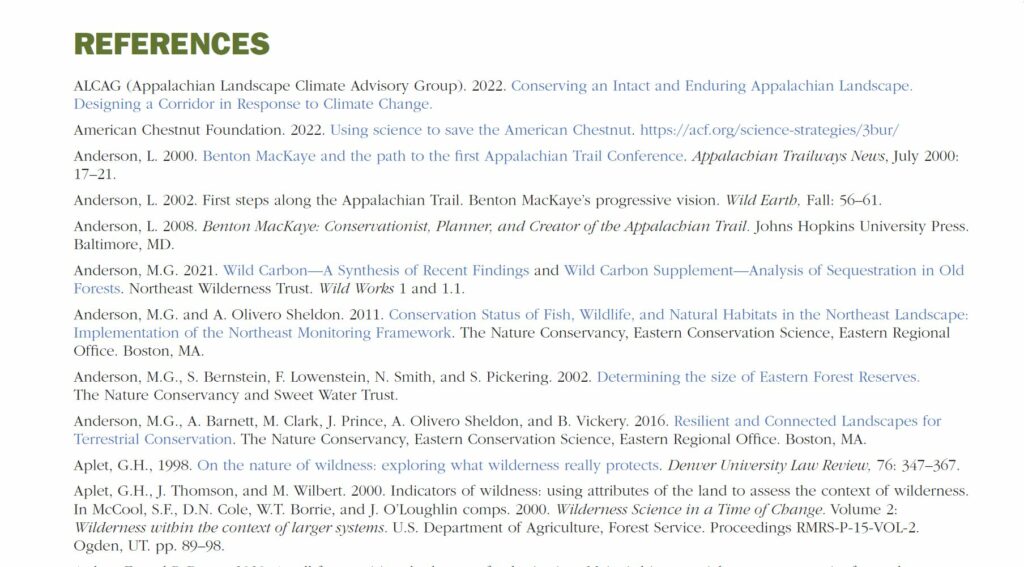About the Report
Wildlands in New England is the first U.S. study to map and characterize all permanently conserved lands in one region that are managed to be forever wild.
The report answers these three important questions:
- Where are Wildlands located in New England?
- What are the characteristics of these Wildlands?
- What is their current protection status?
Wildlands in New England provides a critical baseline and a path forward for advancing policies and securing funding to accelerate Wildlands conservation in New England.
Research for this report was conducted by Wildlands, Woodlands, Farmlands & Communities partners Harvard Forest, Highstead Foundation, and Northeast Wilderness Trust, in collaboration with over one hundred conservation organizations and municipal, state, and federal agencies.
Why This Report? Why Now?
Wildlands offer a vital solution to climate change, biodiversity loss, and threats to human health and safety. Today, 81% of New England is forested, yet only 3.3% of the region is considered Wildlands. This fact makes New England uniquely positioned to lead the nation’s participation in the 30×30 global conservation effort while also securing the region’s future.
Who Can Use this Report?
The findings and recommendations detailed in this report provide a clear path for policymakers, public and private funders, land trusts, conservation organizations, landowners, and citizens. It provides the context, data, information, and recommendations needed to make land protection decisions at the local, state, and regional levels.
What are Wildlands?
Wildlands are tracts of any size and current condition, permanently protected from development, in which management is explicitly intended to allow natural processes to prevail with “free will” and minimal human interference. Humans have been part of nature for millennia and can coexist within and with Wildlands without intentionally altering their structure, composition, or function.
Definition from Wildlands in New England
Where to Start
Integrated Approach
The Wildlands, Woodlands, Farmlands and Communities (WWF&C) vision calls for protection of Wildlands as part of an integrated approach to conservation that also includes forests managed for wood products, natural spaces for recreation and renewal, and farmlands that produce local food — while considering the human communities that rely on the health and beauty of the land that they call home.
Goals of the Study
- Establish a definition of Wildlands applicable to the land ownership of New England, and of the United States.
- Identify all lands fitting this definition from over 650 areas recommended by hundreds of groups.
- Develop and maintain an open-source database and online, interactive web map showing all Wildlands and protected conservation lands in New England, adding to and complementing existing databases of conserved lands.
- Disseminate the results and recommendations to landowners, practitioners, and policy makers to increase the understanding, appreciation, and conservation of Wildlands as a critical part of an integrated approach to land planning, both regionally and worldwide.
- Initiate further research on and tracking of Wildland conservation as part of the WWF&C initiative.
Methodology
Research for this report progressed through several iterative phases: (1) establishment of the study’s scope and approach to identify and evaluate potential Wildlands; (2) region-wide outreach to public agencies and conservation organizations for inventory of existing Wildlands, collection of supporting information for each potential property, and refinement of evaluation methods; (3) systematic review of properties according to the established criteria, review of the emerging database with all external collaborators, data correction, and final review of challenging and newly uncovered parcels; and (4) analysis, interpretation, and product development.
Data Availability
The GIS data used in this study is being hosted at Harvard Forest and may be viewed here.
Submit a Property to the Wildlands Database
The Wildlands in New England report could not have been completed without the help of dozens of partners who suggested potential Wildlands to evaluate for inclusion in our database. Since
accurate and current data are critical for documenting progress towards Wildland goals and
supporting all stakeholders in conservation and policy, the Harvard Forest and Highstead will
maintain an openly accessible set of data archives, web-based maps, and tools to share current
information on all protected open space and Wildlands for the six-state region. To help determine if a parcel of land meets the Wildlands criteria, view the checklist.
Report Authors
David Foster, Emily E. Johnson, Brian R. Hall, Jonathan Leibowitz, Elizabeth H. Thompson, Brian Donahue, Edward K. Faison, Jamie Sayen, David Publicover, Nancy Sferra, Lloyd C. Irland, Jonathan R. Thompson, Robert Perschel, David A. Orwig, William S. Keeton, Malcolm L. Hunter Jr., Susan A. Masino, and Lillian Howell
Contributing Organizations

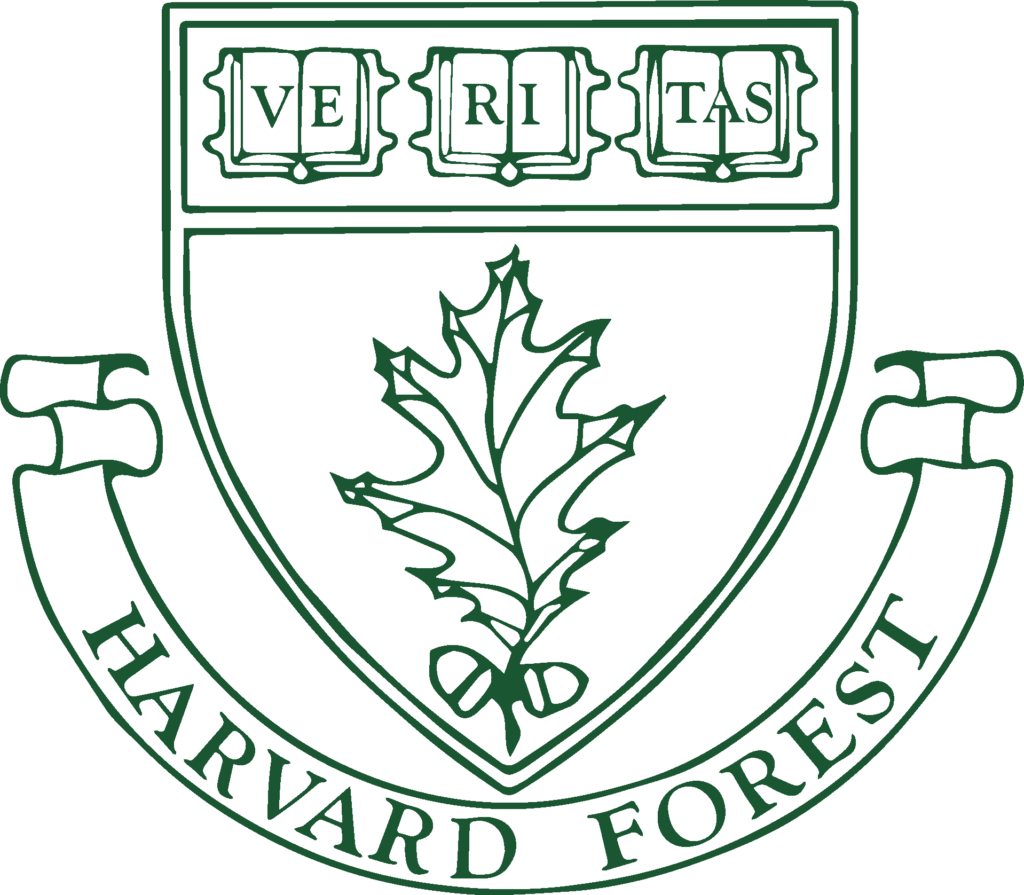
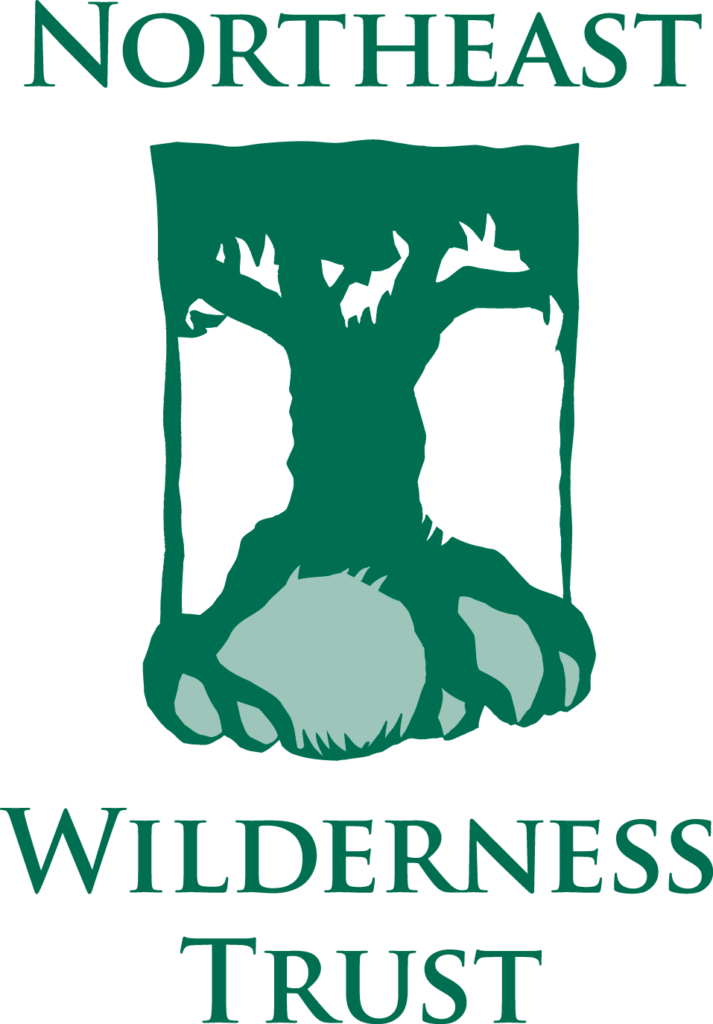
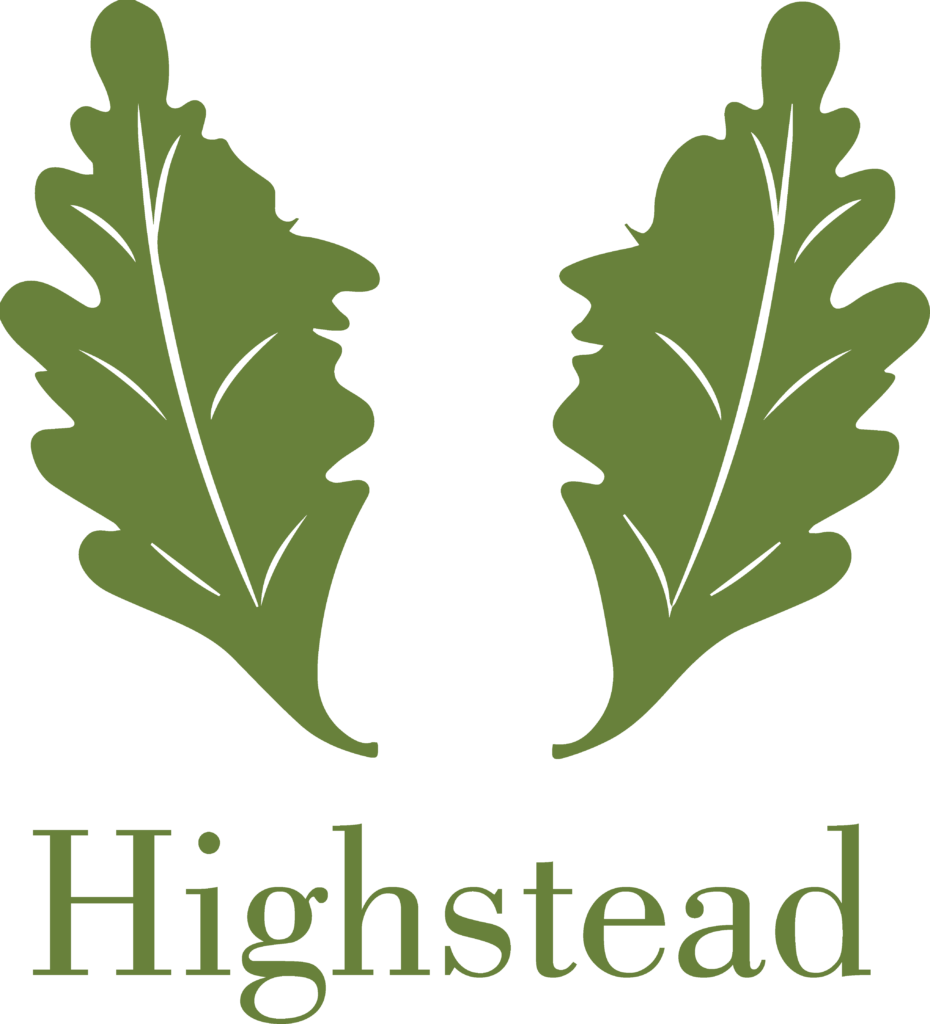
Citation for the Full Report
Foster, D., E. E. Johnson, B. R. Hall, J. Leibowitz, E. H. Thompson, B. Donahue, E K. Faison, J. Sayen, D. Publicover, N. Sferra, L. C. Irland, J. R. Thompson, R. Perschel, D. A. Orwig, William S. Keeton, M. C. Hunter Jr., S. A. Masino, and L. Howell. 2023. Wildlands in New England. Past, Present, and Future. Harvard Forest Paper 36. Harvard University.
